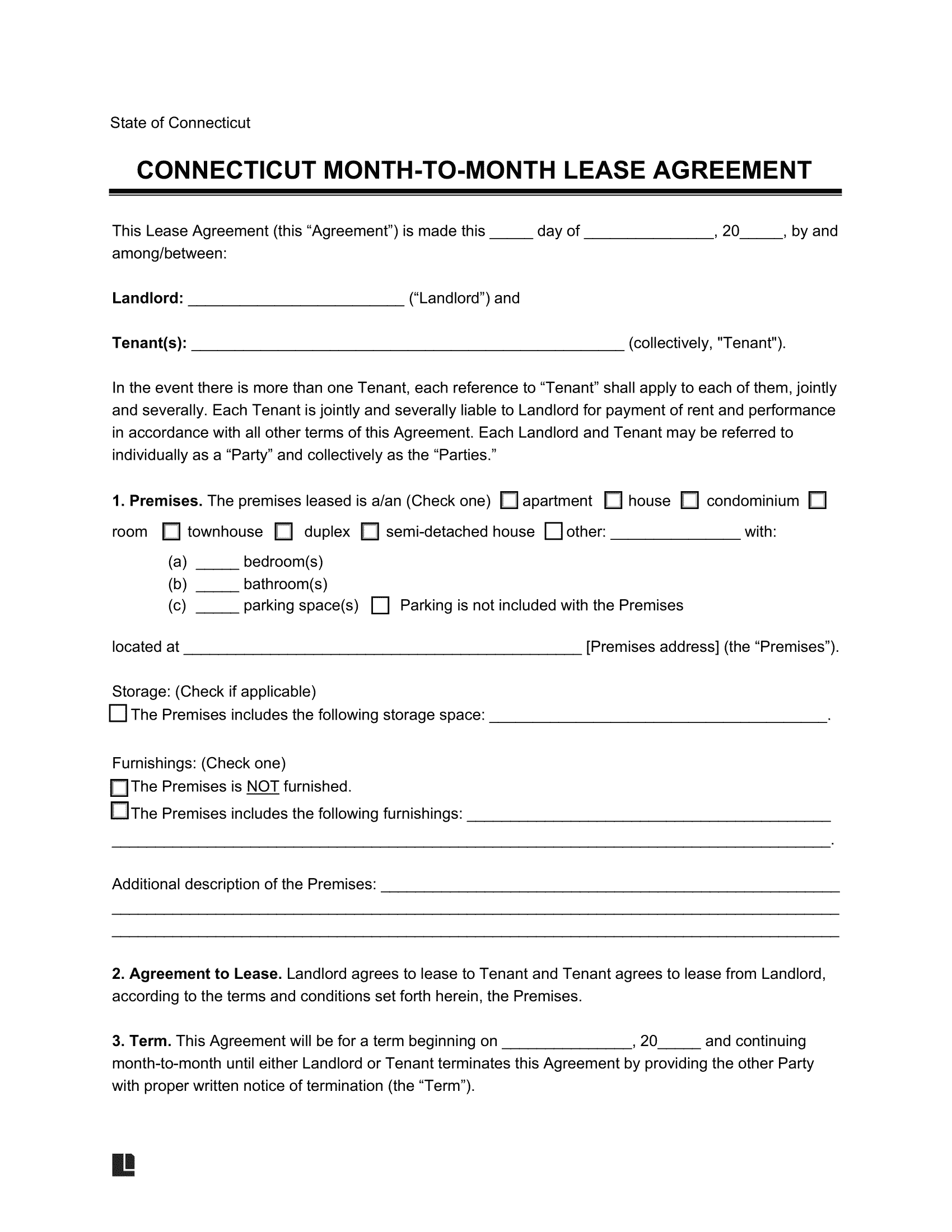A Connecticut month-to-month rental agreement is a flexible leasing arrangement between a landlord and a tenant, automatically renewing unless terminated by either party with proper notice. It allows for the rental of residential property on a monthly basis and outlines key terms such as rent amount, due date, responsibilities, and conditions of occupancy.
Whether tenants require short-term housing or landlords seek adaptable rental solutions, this agreement ensures a balance of rights and responsibilities. Adhering to the state’s housing laws is essential for ensuring a successful tenancy.
Legal Requirements for Month-to-Month Leases
- Minimum Termination Period: In Connecticut, either party must provide at least 3 days’ written notice before the intended date of termination. However, specific terms may vary based on the details outlined in the rental agreement, so individuals should refer to their lease document for the exact notice requirements. [1]
- Rent Increase: There are no state laws regulating rent increases, so landlords may provide a 30-day notice before raising the rent in accordance with the lease duration.
Required Disclosures
- Disclosure of lead-based hazards
- Bed bug addendum
- Sprinkler disclosure
- Landlord’s personal information
- Condominium interest community disclosure
More information on required disclosure and state laws is available on our Connecticut lease agreement page.
Connecticut Month-to-Month Eviction
For month-to-month rentals, landlords must adhere to specific procedures to evict tenants. They must provide a written notice to quit possession, which varies based on the reason for termination, such as lease expiration, violation of lease terms, nonpayment of rent, or nuisance. For nonpayment of rent, the notice must be delivered at least three days before termination.
The Connecticut Eviction Process details the steps for evicting a tenant.


